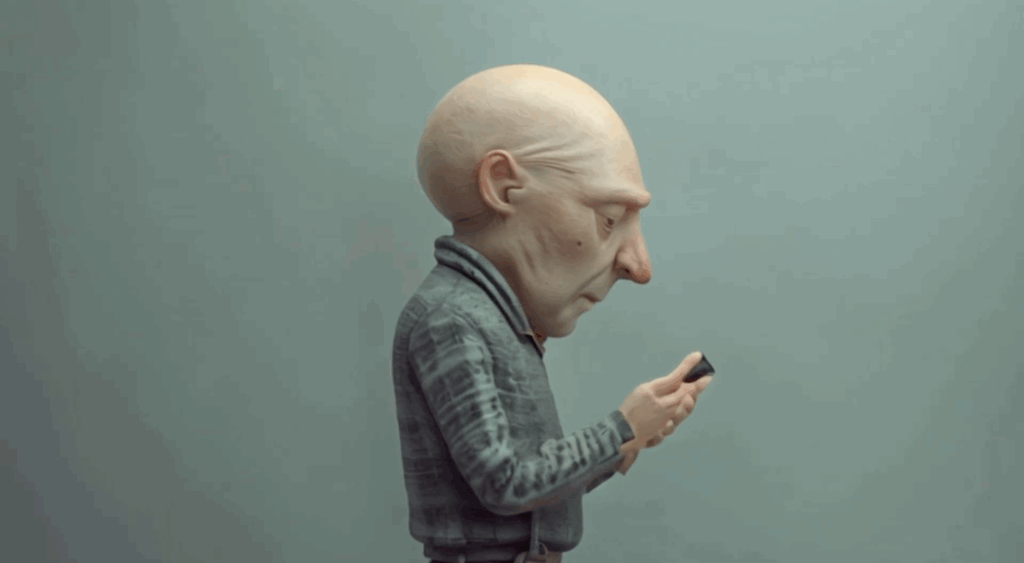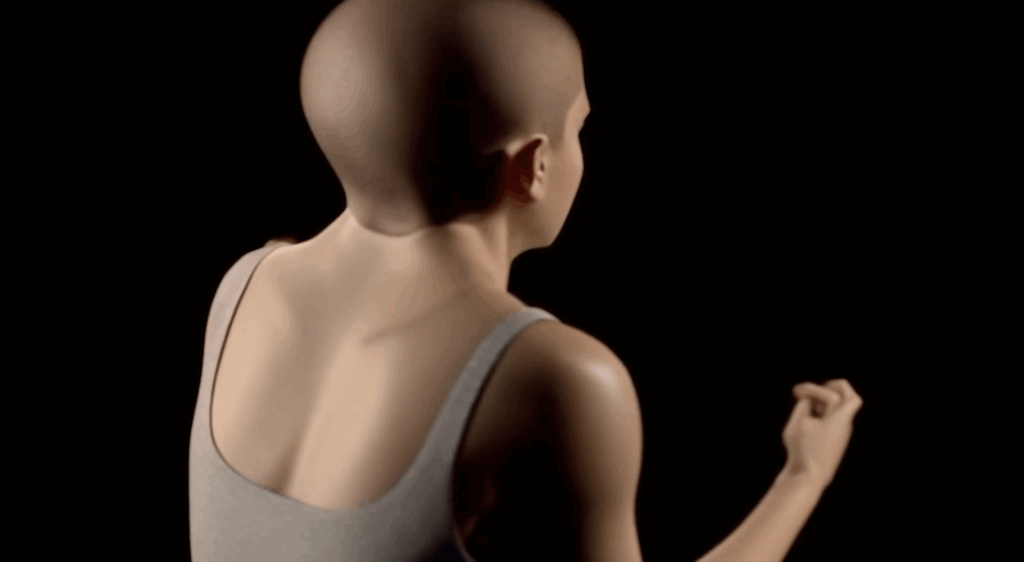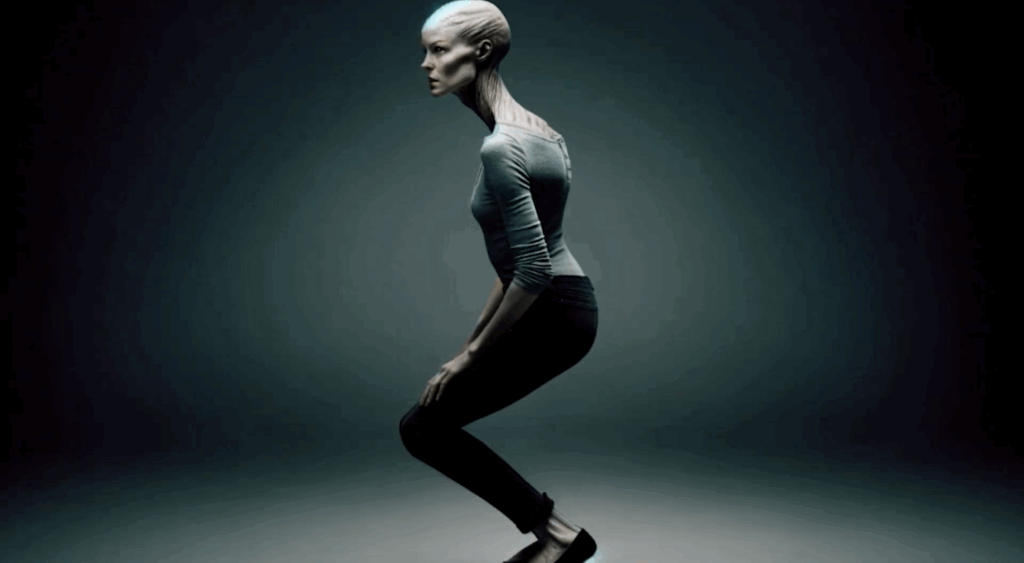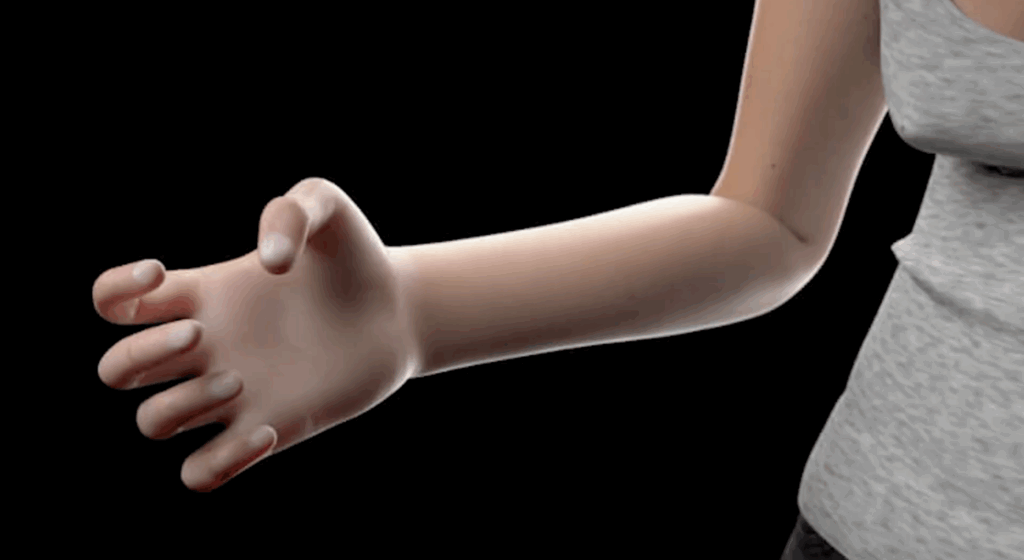What will humans look like a thousand years from now? A group of medical researchers has created a model named “Mindy” to explore exactly that.
Based on current technology trends and digital habits, Mindy represents what the average person of the future could physically become if we continue down the same path of tech dependency. Here are seven surprising and unsettling ways your body might evolve, based on what Mindy suggests. Her design offers a warning as much as a prediction, showing how modern lifestyles might reshape our bodies in unexpected and uncomfortable ways.
1. Smaller Brain, Bigger Head
One of the most noticeable changes in Mindy’s appearance is her oversized head. But it is not because she is smarter. In fact, Mindy’s brain is actually smaller. Researchers theorize that as artificial intelligence, machine learning, and quantum computing become more advanced, humans may rely less on their own problem-solving skills.
As a result, our brains might shrink while our skulls evolve to accommodate other adaptations, like screen-heavy sensory input.

2. Protective Eye Features
Take a closer look at Mindy’s eyes and you will notice some subtle changes. Future humans could develop a thicker inner eyelid to help filter out the harmful blue light emitted by screens.
This adaptation would be crucial for a society that spends a large portion of the day staring at phones, computers, and digital devices. Larger eyes may also evolve to deal with extended periods of screen exposure and low light environments. Constant indoor living and artificial lighting could reshape how our vision functions, prioritizing screen clarity over natural depth perception.

3. “Tech Neck” Takes Over
Years of staring down at phones and laptops may cause our necks to evolve for strength rather than elegance. Mindy’s neck is wider and bulkier than ours, not from exercise, but as a natural adaptation to the constant downward tilt caused by technology use. In this future, a strong neck is essential for supporting the head’s weight and posture during all those hours of scrolling and swiping.
Over time, the muscles and bones in the neck could thicken to prevent strain and injury. This change reflects how our bodies might reshape themselves in response to digital habits becoming the norm.

4. Slouched Posture Becomes the Norm
One of the most dramatic changes is Mindy’s curved spine. This represents how the human posture could evolve to accommodate a tech-focused lifestyle.
If future generations continue spending most of their time hunched over keyboards and phones, the body may permanently adapt to a slouched position, which could eventually become the standard human form. This shift could lead to chronic pain and reduced mobility, redefining what we consider a natural stance. The upright posture that once symbolized health and strength might become a thing of the past.

5. Locked Elbows from Device Use
“Smartphone elbow” is another side effect of constant device use. On Mindy, her elbows are permanently bent at right angles, a reflection of how we hold our phones and tablets for long periods.
This locked-in posture could become a lasting evolutionary trait if our digital habits remain unchanged over the centuries. Over time, the arm’s range of motion could narrow, and muscles might adapt to favor static positioning over flexibility. What begins as convenience may ultimately reshape our basic anatomy.

6. Hands Become More Like Claws
Years of texting and screen tapping might cause the human hand to evolve into something less graceful and more claw-like. Mindy’s hands suggest a future where fingers are permanently curled to grip devices.
This could mean reduced dexterity and a stronger grip but less flexibility. The constant motion of typing and swiping may reshape how our fingers and joints work altogether. Fine motor skills could decline, while tendons and muscles adapt to repetitive tech-based movements, changing the way we interact with both digital and physical tools.

7. Evolution Driven by Technology, Not Nature
All of these potential changes reflect one core idea: human evolution is becoming less about adapting to nature and more about adapting to our technology. Mindy is a warning of what could happen if we continue to build our lives around screens. While evolution typically takes thousands or even millions of years, modern habits might be accelerating certain physical changes faster than ever before.

So, will future humans really look like Mindy? No one can say for sure. But if we want to avoid some of these extreme adaptations, it might be time to sit up straight, take screen breaks, and give our bodies a chance to evolve on our own terms.



























